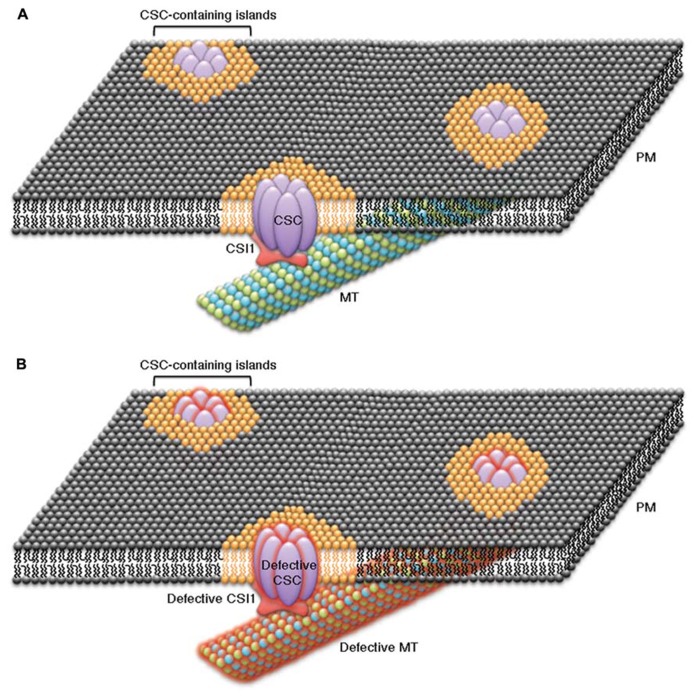FIGURE 1.
Schematic representation of the cellulose biosynthesis machinery displays a continuum between cellulose synthase complexes (CSCs), CSC-associated proteins (e.g., CSI1), cortical microtubules (MT), and the plasma membrane. The transmembrane CSCs might be embedded in lipid islands or lipid micro-domains of specialized lipid content (orange lipids) that are surrounded by a sea of plasma membrane of normal composition (black lipids). CSI1 might act as a scaffold between CSCs, microtubules, and specialized lipids of CSC-containing islands by interacting with all three of these components to form a CSC, CSI1, microtubule, and lipid continuum. (A) The components in the continuum, including CSCs, CSC-interacting proteins, specialized lipids, and cortical microtubules, are closely associated. Under normal conditions CSCs that are within CSC-containing islands move along cortical microtubules during cellulose biosynthesis in a CSI1-dependent manner. (B) A defect in any single component of the CSC continuum causes a disruption of each of the other components of the continuum. Examples of experimental evidence that supports the CSC continuum model include: disruption of cortical microtubules influences the distribution and dynamics of CSCs and CSI1, genetic disruption of CSI1causes changes in both CSCs and cortical microtubules, and genetic disruption of CSCs or CSC-associated proteins (e.g., KOR1) affect the organization of cortical microtubules.

